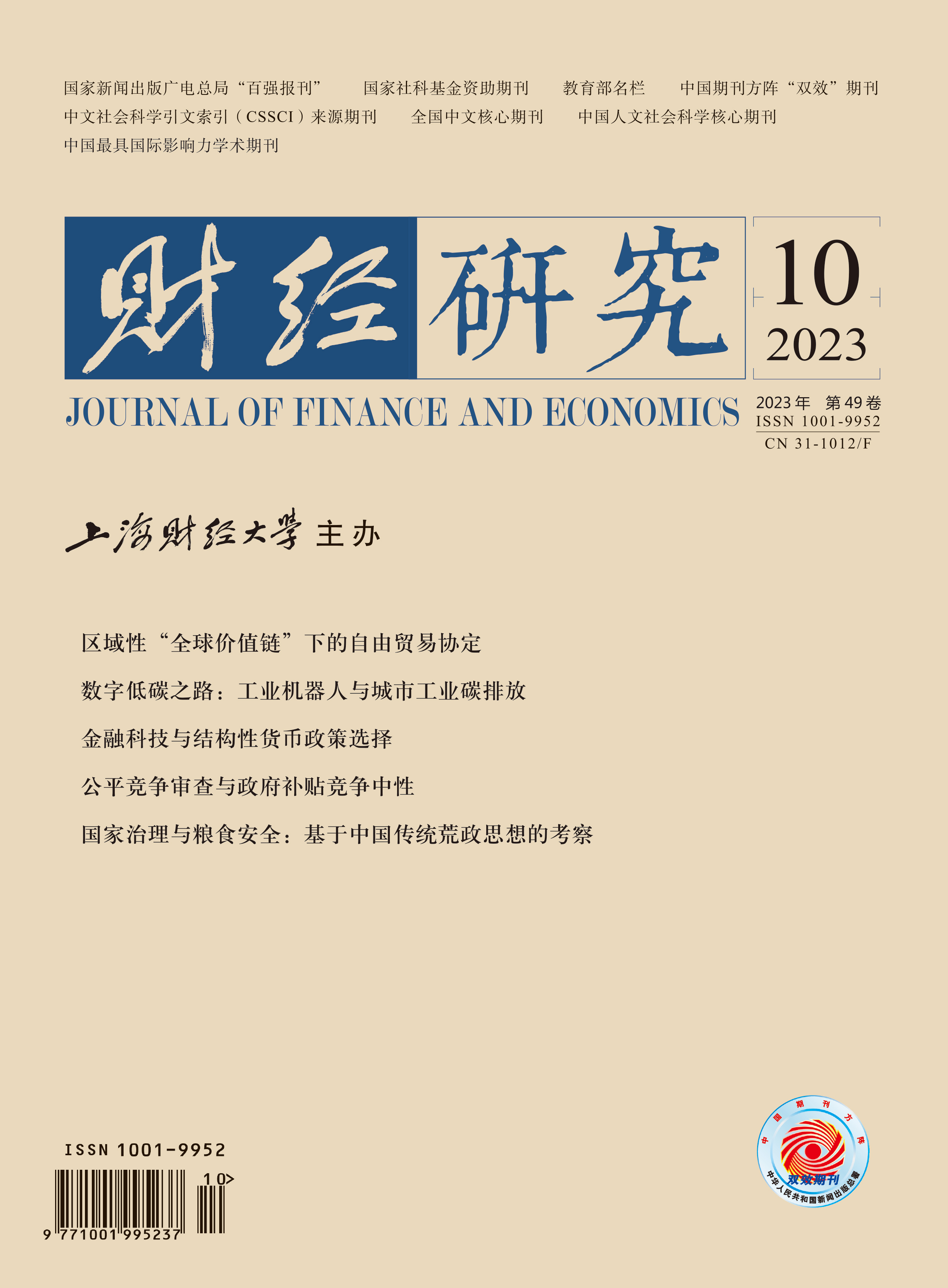在加班常态化趋势下,灵活的创业活动能否帮助个体摆脱时间压力?文章采用中国时间利用调查(CTUS)与中国家庭金融调查(CHFS)的匹配数据,探究了创业者的时间配置方式、时间贫困的存在性、缓解机制及其对个人身心健康的影响。研究结果显示,创业者的时间配置呈现“一长三短”特征,与普通就业者相比,创业者的日均总劳动时间要多48分钟,在控制相关特征变量后,其陷入时间贫困的概率要高5.3%。因此,创业者存在时间贫困问题。机制检验结果表明,良好的营商环境、社会网络和专有人力资本能够有效缓解创业者的时间贫困问题。进一步检验发现,时间贫困会对创业者的心理和生理健康产生不利影响,给创业者福祉带来“隐性风险”。文章的研究为提高创业群体的福利保障提供了新视角,为完善创新创业环境提供了一定的理论支撑和实践方向。
创业者时间贫困研究
摘要
参考文献
1 樊增增,邹薇. 从脱贫攻坚走向共同富裕:中国相对贫困的动态识别与贫困变化的量化分解[J]. 中国工业经济,2021,(10):59−77. DOI:10.3969/j.issn.1006-480X.2021.10.004
2 符国群,姜海纳,张晓丹. 家务时间配置如何影响夫妻对家庭省时产品的购买[J]. 管理世界,2020,(10):126−138. DOI:10.3969/j.issn.1002-5502.2020.10.010
3 郭云南,王春飞. 第一大姓当选是否会促进创业?[J]. 经济学(季刊),2020,(4):1355−1374. DOI:10.13821/j.cnki.ceq.2020.03.10
4 何翠香,晏冰. 社会网络、融资渠道与家庭创业−基于中国家庭金融调查数据的研究[J]. 南方金融,2015,(11):30−37. DOI:10.3969/j.issn.1007-9041.2015.11.005
9 林涛,魏下海. 营商环境与外来移民的企业家精神[J]. 宏观质量研究,2020,(1):57−68. DOI:10.13948/j.cnki.hgzlyj.2020.01.005
10 刘琳,赵建梅. 社会网络如何影响代际收入流动?[J]. 财经研究,2020,(8):80−93. DOI:10.16538/j.cnki.jfe.2020.08.006
13 穆滢潭. 家庭工作冲突与个人生活福祉−强化与支持非正式工作资源的观点[J]. 财经研究,2020,(10):123−138. DOI:10.16538/j.cnki.jfe.20200518.301
16 田莉,张玉利. 创业者的工作家庭冲突−基于角色转型的视角[J]. 管理科学学报,2018,(5):90−110. DOI:10.3969/j.issn.1007-9807.2018.05.007
20 于文超,梁平汉. 不确定性、营商环境与民营企业经营活力[J]. 中国工业经济,2019,(11):136−154. DOI:10.19581/j.cnki.ciejournal.2019.11.008
21 Balducci C, Alessandri G, Zaniboni S, et al. The impact of workaholism on day-level workload and emotional exhaustion, and on longer-term job performance[J]. Work & Stress,2021,35(1): 6−26.
22 Becker G S. A theory of the allocation of time[J]. The Economic Journal,1965,75(299): 493−517. DOI:10.2307/2228949
23 Capelleras J L, Contin-Pilart I, Larraza-Kintana M, et al. Entrepreneurs’ human capital and growth aspirations: The moderating role of regional entrepreneurial culture[J]. Small Business Economics,2019,52(1): 3−25. DOI:10.1007/s11187-017-9985-0
24 Capelleras J L, Greene F J, Kantis H, et al. Venture creation speed and subsequent growth: Evidence from south America[J]. Journal of Small Business Management,2010,48(3): 302−324. DOI:10.1111/j.1540-627X.2010.00296.x
25 Cooper A C, Gimeno-Gascon F J, Woo C Y. Initial human and financial capital as predictors of new venture perfor- mance[J]. Journal of Business Venturing,1994,9(5): 371−395. DOI:10.1016/0883-9026(94)90013-2
26 De Maya Matallana M, López-Martínez M, Riquelme-Perea P J. Measurement of quality of life in Spanish regions[J]. Applied Research in Quality of Life,2022,17(1): 1−30. DOI:10.1007/s11482-020-09870-x
27 Dimov D. Towards a qualitative understanding of human capital in entrepreneurship research[J]. International Journal of Entrepreneurial Behavior & Research,2017,23(2): 210−227.
28 Dong Z Q, Wei X H, Zhang Y J. The allocation of entrepreneurial efforts in a rent-seeking society: Evidence from China[J]. Journal of Comparative Economics,2016,44(2): 353−371. DOI:10.1016/j.jce.2015.02.004
29 Ganster D C, Rosen C C, Fisher G G. Long working hours and well-being: What we know, what we do not know, and what we need to know[J]. Journal of Business and Psychology,2018,33(1): 25−39. DOI:10.1007/s10869-016-9478-1
30 Gershuny J. Busyness as the badge of honor for the new superordinate working class[J]. Social Research,2005,72(2): 287−314. DOI:10.1353/sor.2005.0026
31 Goodin R E, Rice J M, Bittman M, et al. The time-pressure illusion: Discretionary time vs. free time[J]. Social Indicators Research,2005,73(1): 43−70. DOI:10.1007/s11205-004-4642-9
32 Haines III V Y, Marchand A, Genin E, et al. A balanced view of long work hours[J]. International Journal of Workplace Health Management,2012,5(2): 104−119. DOI:10.1108/17538351211239153
33 Mannheim B, Schiffrin M. Family structure, job characteristics, rewards and strains as related to work-role centrality of employed and self-employed professional women with children[J]. Journal of Organizational Behavior,1984,5(2): 83−101. DOI:10.1002/job.4030050202
34 McGinnity F, Russell H. Work rich, time poor? Time-use of women and men in Ireland[J]. The Economic and Social Review,2007,38(3): 323−354.
35 Merz J, Rathjen T. Time and income poverty: An interdependent multidimensional poverty approach with German time use diary data[J]. Review of Income and Wealth,2014,60(3): 450−479. DOI:10.1111/roiw.12117
36 Parasuraman S, Simmers C A. Type of employment, work-family conflict and well-being: A comparative study[J]. Journal of Organizational Behavior,2001,22(5): 551−568. DOI:10.1002/job.102
37 Power S A, Madsen T, Morton T A. Relative deprivation and revolt: Current and future directions[J]. Current Opinion in Psychology,2020,35: 119−124. DOI:10.1016/j.copsyc.2020.06.010
38 Qi L S, Dong X Y. Gender, low-paid status, and time poverty in urban China[J]. Feminist Economics,2018,24(2): 171−193. DOI:10.1080/13545701.2017.1404621
39 Rudolf R. Work shorter, be happier? Longitudinal evidence from the Korean five-day working policy[J]. Journal of Happiness Studies,2014,15(5): 1139−1163. DOI:10.1007/s10902-013-9468-1
40 Vickery C. The time-poor: A new look at poverty[J]. The Journal of human Resources,1977,12(1): 27−48. DOI:10.2307/145597
41 Vroom V H. Work and motivation[M]. San Francisco: Wiley, 1964.
42 Welsh D H B, Kaciak E. Family enrichment and women entrepreneurial success: The mediating effect of family interference[J]. International Entrepreneurship and Management Journal,2019,15(4): 1045−1075. DOI:10.1007/s11365-019-00587-4
43 Wodon Q, Bardasi E. Measuring time poverty and analyzing its determinants: Concepts and application to guinea[J]. Economics Bulletin,2006,10(12): 1−7.
引用本文
李琳娜, 王宇. 创业者时间贫困研究[J]. 财经研究, 2023, 49(10): 64-79.
导出参考文献,格式为:





 5358
5358  7638
7638

